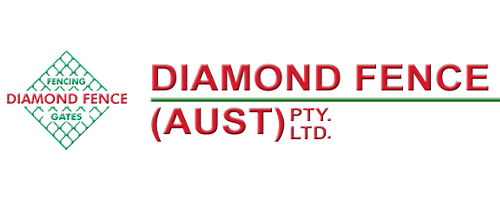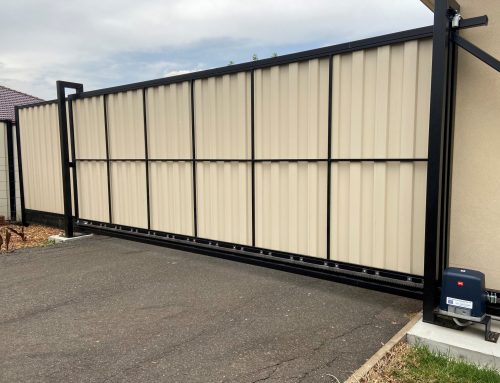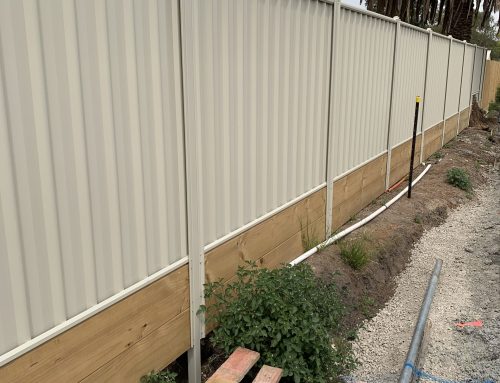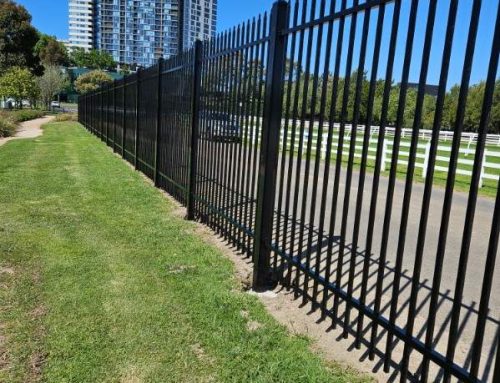Ways To Apply Zinc Coatings During Galvanizing
Galvanizing has been a very popular topic in our latest blog posts. Why are we putting such an emphasis on the zinc coating applied during the galvanizing process? Because it’s all about protecting your fence, be it chain wire fence or tubular steel fence, for as long as we can from corrosion, and adding as many years to its lifecycle as possible. Today, we will look at the different ways to apply zinc coatings during the galvanizing process.
Have you heard a saying ‘repetition is the mother of wisdom’? Well, here you go if you haven’t. Before we proceed with the zinc coating types in galvanizing, we’ll take a quick look at corrosion and galvanizing itself.
What is corrosion? In general, corrosion is an electrochemical reaction of materials and substances in the environment. Why is this important to know, especially when it comes to metal fencing? Because rusting is a form of corrosion. Rusting is an electrochemical reaction of iron and oxygen in the presence of water or air moisture. Rust can be fatal for your metal fence as rust can spread, and firstly innocent-looking little rust spot can destroy your metal fence. Therefore, you have to be aware of the effect of corrosion on your fence, and how to protect it. Galvanizing is one of the most common and best ways to do that.
A quick reminder of what is galvanizing? Simply put, galvanizing is a process during which a thin zinc coating is applied to a thicker base metal to protect it from the surrounding environment, and yes, you guessed it correctly, to protect it from corrosion!
Knowing what corrosion and galvanizing are, we will move on to find out different ways to apply zinc coatings on materials like metal.
When it comes to different zinc coatings, it comes down to their characteristics and performance.
Galvanizing uses various application methods, for example, hot-dip galvanizing, electroplating, sherardising, mechanical plating, painting with zinc-rich coatings or zinc spraying. The most popular galvanizing process is hot-dip galvanizing.
1. BATCH HOT DIP GALVANIZING
Hot-dip galvanizing is one of the most widely used galvanizing methods. With hot dipping, you can galvanize materials with different sizes, starting from small to hundreds of meters long/high structures. Large galvanizing baths that have modular design techniques and double-end dipping allow galvanizing almost any structure to prolong its lifecycle through applying zinc coating to protect it from corrosion.
In hot-dip, galvanizing items are galvanized by immersion in molten zinc. During the galvanizing process, the thickness of the zinc coating depends on the mass of the steel galvanized. The whole surface of the metal is covered. The hot-dip galvanizing also allows covering corners, seal edges and other areas that are usually hard to reach but are most often exposed to corrosion.
2. CONTINUOUS GALVANIZING PROCESSES (IN-LINE GALVANIZING)
Another way of applying zinc on items like steel sheets, pipes or wires can be done through a continuous galvanizing process, also known as in-line galvanizing. The continuous galvanizing process allows controlling the coating thickness applied to the material, allowing more accurate and needed zinc coating thickness.
In-line galvanizing produces thinner coating than batch hot-dip galvanizing process. The thickness of the zinc coating determines the length of the protection, meaning that the thicker the zinc coating, the longer is material able to resist corrosion. Therefore, items that have been galvanized through the in-line galvanizing process, are likely to have a less corrosion protective layer.
Why is the in-line galvanizing process used when batch hot-dip galvanizing offers much better protection against corrosion? Because some materials or items cannot be batch hot-dip galvanized as continuous galvanized products can usually be further processed by bending or roll forming.
3. THERMAL SPRAY
Thermal spraying is a process of spraying semi-molten zinc onto fabricated items. To spray semi-molten zinc, heat sources like wire or powder heated by a flame, arc spray, or plasma are used.
Why is thermal spray useful? It can be used in large structures, and the zinc layer can be sprayed on the surfaces in the factory or on the field, eliminating the problem of getting the particles into the premises that have galvanizing baths.
4. ELECTROPLATING
Electroplating is a process of applying protective zinc coating to small steel components, such as fasteners with fine threads. It’s usually not used for outdoor exposure without other supplementary coatings.
5. ZINC-RICH PAINTS
Last but not least way of applying zinc coating to the item, structure or material, is using zinc-rich paints. These are paints that have metallic zinc dust in binders, organic or inorganic. Zinc-rich paints are also a great way to repair the damage that galvanized coatings may have.
Using zinc-rich paints allows you to do it wherever needed, on any sized item. Also, the thickness of the coating is managed by you.
The above are a few ways of applying zinc coatings during the galvanizing process. Diamond Fence knows the importance of galvanizing and using galvanized fencing materials. Therefore, if you need a new fence, galvanized or not, or you need to get your fence or gate repaired, once again galvanized or not, you can turn to us and our fencing experts.
Give us a call on (03) 9753 4566, shoot us an email on info@diamondfence.com.au, or just get a FREE online quote.








